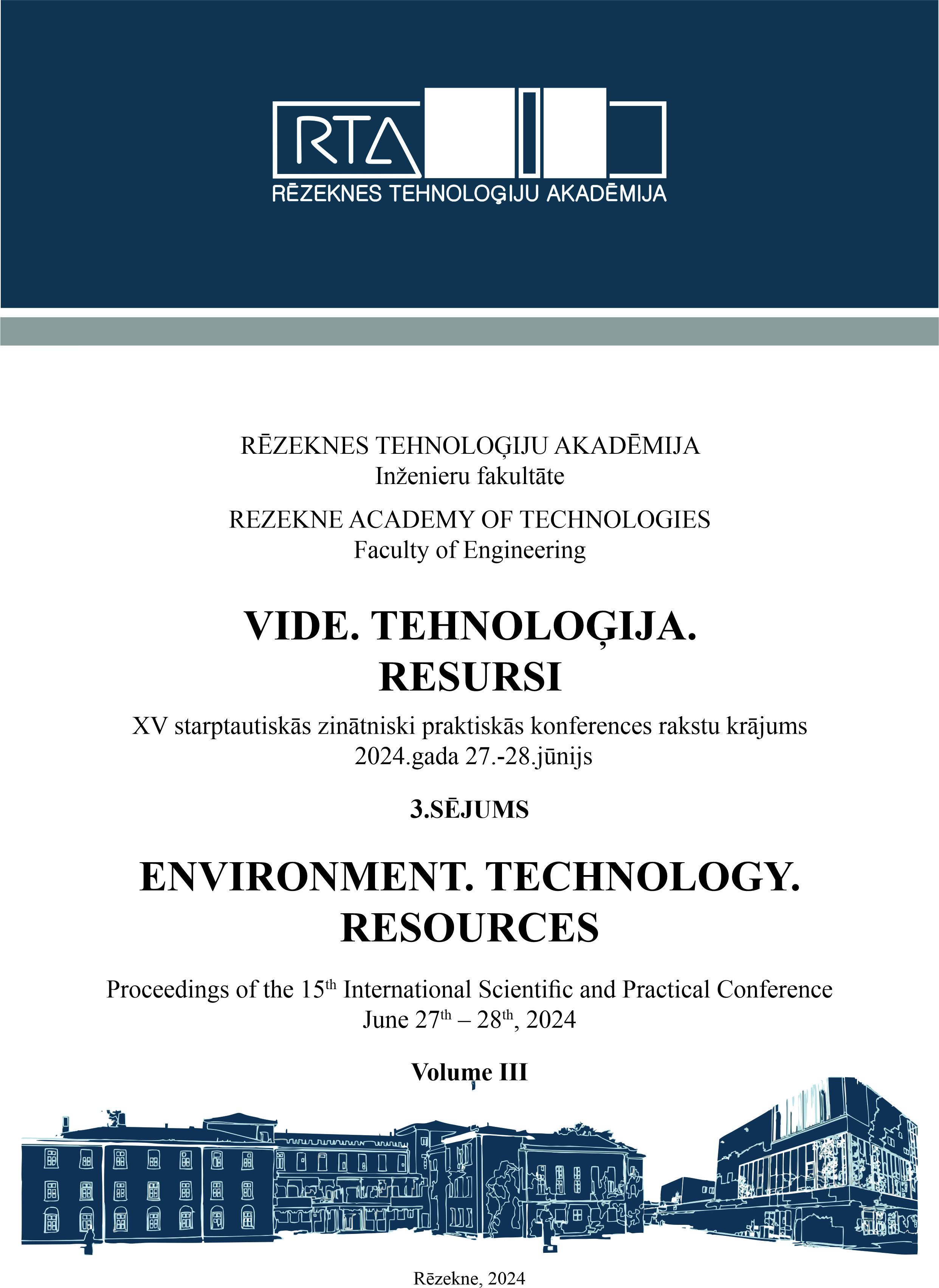ELECTRIC GENERATOR MODEL RESEARCH (STAGE EFFICIENCY OF ELECTROMECHANICAL PART)
DOI:
https://doi.org/10.17770/etr2024vol3.8155Keywords:
robotic system, electricity generator, regeneration, electricity, windAbstract
The article presents interim results of an ongoing continued study (https://doi.org/10.17770/etr2023vol3.7261). At this stage, measurements are made on a model in which two cavities for magnets and coils are already provided in the turned-wing impeller. The cavities contain mounted magnets that rotate with the impeller around to the housing stationary mounted coils. We already have two independent power generators. In the initial stage, these two generators were selected with coils of different inductance and the voltage and current generated by them were measured. The goal is to find out the possibilities of efficiency using a comparative method, as well as the dependence of the parameters of the generated energy on the speed of the air flow. In the experiments, the speed of the air flow, the area of the air inlet and the area of the air outlet were varied. A rather large amount of data was received, the processing of which will still have to be worked on, but the general trends of the dependence of the extracted electricity parameters not only on the air flow speed, but also on the geometric parameters of the ducts (in this case, the areas of the openings) became apparent. The general parameters of the generated current are already obtained at values suitable for practical use, because in the previous stage of research these values were insufficient to achieve the level of the practical efficiency factor. The article discusses the results of the experiments, observed trends, presents generalizations and conclusions, and predicts directions for further research.
References
R. P. Murkund, Wind and solar power systems: design, analysis, and operation. Boca Raton, 2006.
Lithuania Wind Assotiation, “Viskas, ką reikia žinoti apie vėjo energetiką“, 2020. [Online]. Available: https://lvea.lt/wp-content/uploads/2021/01/LVEA_Viskas-ka -reikia-zinoti-apie-vejo-energetika.pdf [Accessed: February 26, 2024]
L. Augulis, A. Jotautis and D. Rutkunienė, Fizika: mechanika, termodinamika, elektromagnetizmas: mokomoji knyga, 2012. [Online].Available: https://www.ebooks.ktu.lt/eb/656/fizika_mechanika_termodinamika_elektromagnetizmas/ [Accessed: February 26, 2024]
V. Matutis and M. Matutis, “Patent description”, 2019. [Online]. Available:https://worldwide.espacenet.com/patent/search/family/068887188/publication/EP3840192A1?q=EP3840192A1 [Accessed: February 26, 2024]
V. Matutis, L. Savulioniene, P. Sakalys and L. Gzegozevske, “Research of the Principal Model of t he Electric Energy Generator of the Electric Car (Stage Combination of Mechanical and Electromechanical Parts)”, Environment. Technology. Resources. Vol. 3, 2023. [Online]. Available https://journals.rta.lv/index.php/ETR/article/view/7261/6016 [Accessed: February 26, 2024]
V. Matutis, L. Savulioniene, P. Sakalys and T. Kasperavicius, “Energy Generator Prototypes Development and these Research Integration into the Educational Process”, Society. Integration. Education.Vol 1, 2022. [Online]. Available:http://journals.ru.lv/index.php/SIE/article/view/6884/5683 [Accessed: February 26, 2024]
V. Matutis, L. Savulioniene, P. Sakalys, T. Kasperavicius, “Research of Power Generator Prototype Development and Integration into Autonomous Robotic Systems”, Society. Integration. Education. Vol 5, 2021. [Online]. Available:https://doi.org/10.17770/sie2021vol5.6453 [Accessed: February 26, 2024]
Downloads
Published
Issue
Section
License
Copyright (c) 2024 Vaidotas Matutis, Loreta Savulioniene, Tomas Kasperavicius, Dainius Savulionis

This work is licensed under a Creative Commons Attribution 4.0 International License.



